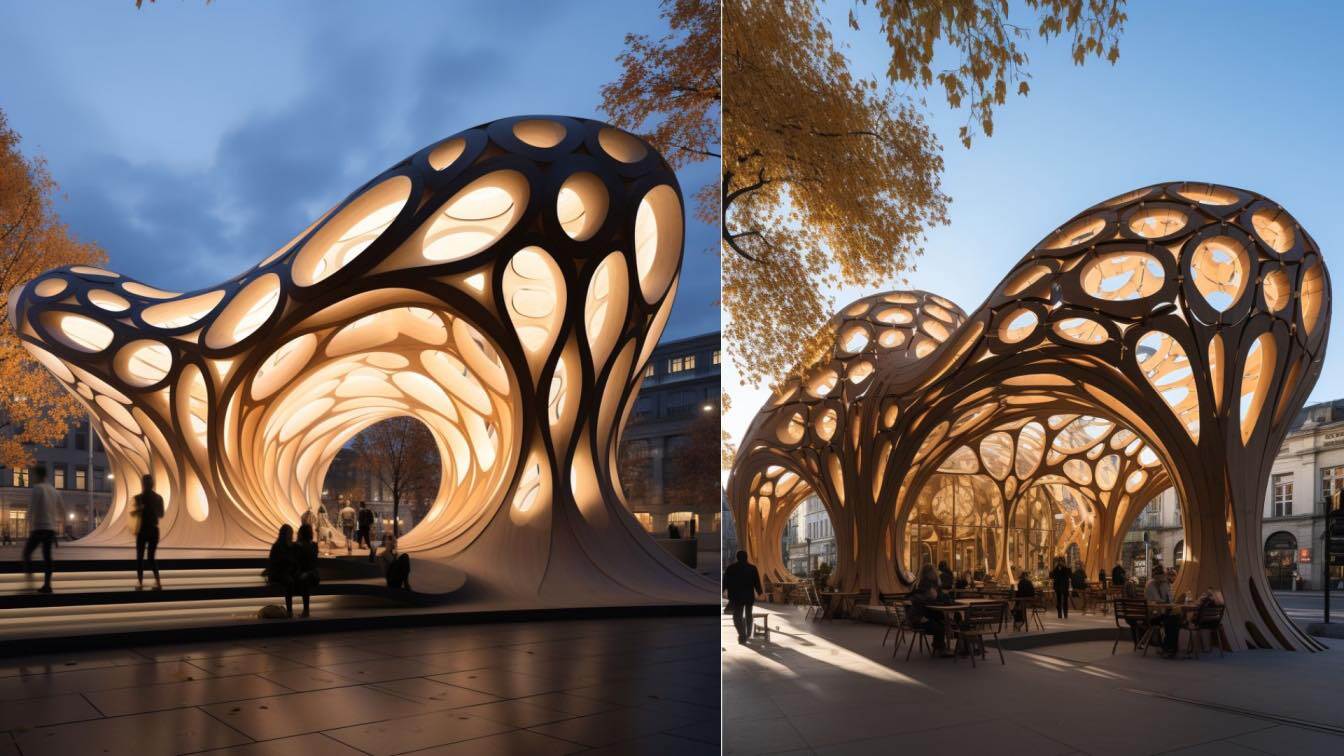Top 20 Examples of Art Deco Buildings 2025
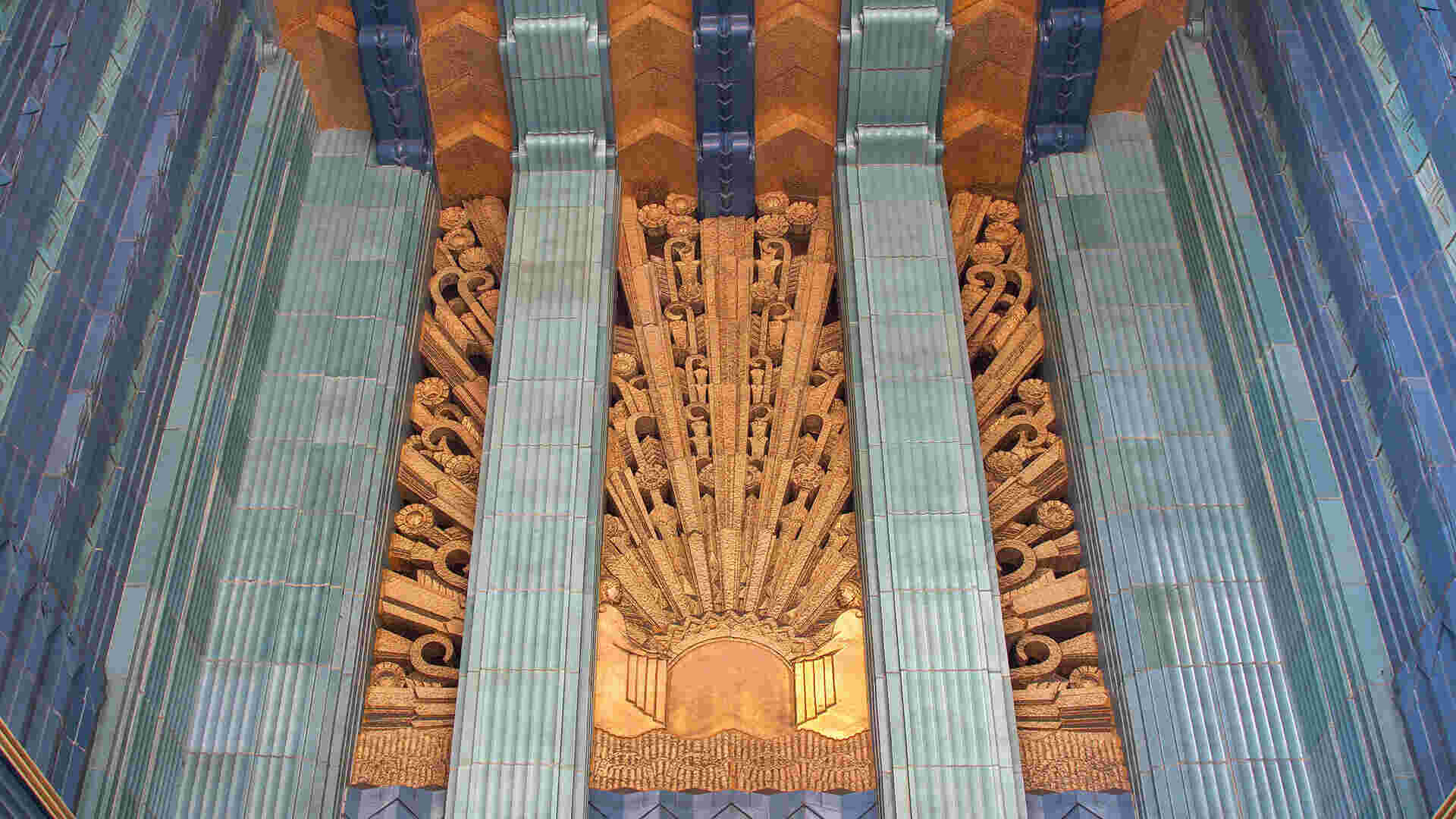
Table of Contents
The 1920s and the 1930s are marked by the challenges of the Great Depression occurring at that time but despite that, there were significant advancements in the field of technology and arts. This includes the birth of the Art Deco style architecture, reflected specifically in the field of architecture and design. Art Deco buildings are known for their bold geometric shapes, lavish ornamentation, and sleek streamlined design responding to the ornate and elaborate styles that had dominated architecture for centuries.
In this blog post, we'll take a look at some of the most beautiful Art Deco buildings in the world. From towering skyscrapers to elegant theatres and hotels, these buildings showcase the best of Art Deco design. Whether you're an architecture enthusiast or simply appreciate beautiful buildings, this listicle is sure to inspire you with its stunning examples of Art Deco architecture from around the world.
When was the Art Deco Period?
Art Deco architecture was popoularised in the early 1900s. It started with a straight and geometric design approach. It peaked in the 1920s during the ‘Roaring 20s’ phase. But saw a decline during the Second World War. In contrast with the modernistic approach it saw its good times with many architects following it and creating around it.
What are the Greatest Examples of Art Deco Architecture?
While Art Deco architecture started as an arts movement, it did not take long for architects, designers and engineers to take it as an inspiration to design different kinds of buildings around the world. These buildings, adorned with Deco motifs are hard to miss out on and have, rather, become international landmarks for their cities.
1. Chrysler Building
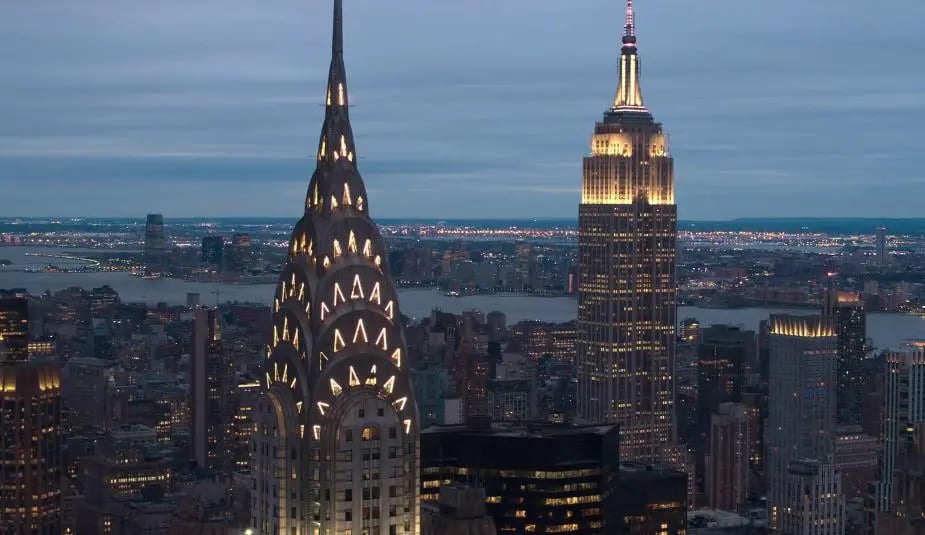
Location: New York, United States of America (USA)
Architect: William Van Alen
The Chrysler Building is one of New York City's most recognizable art deco buildings and is regarded as a representation of the city's architectural history. Considered to be a symbol of modernity and progress, it was one of the first skyscrapers to be built using stainless steel. The exterior of the building is decorated with a variety of Art Deco elements, such as geometric patterns, stylized floral designs, and depictions of automobiles and other machines. The lobby is also decorated with a number of Art Deco murals and mosaics. The structure is tapered, with a wider base and a narrower top. The goal of this design was to minimise the building's impact on the street level while still making it noticeable from a distance.
Read more: 10 Famous Female Architects Leading the Way in the AEC Industry in the Modern Day
2.The Empire State Building
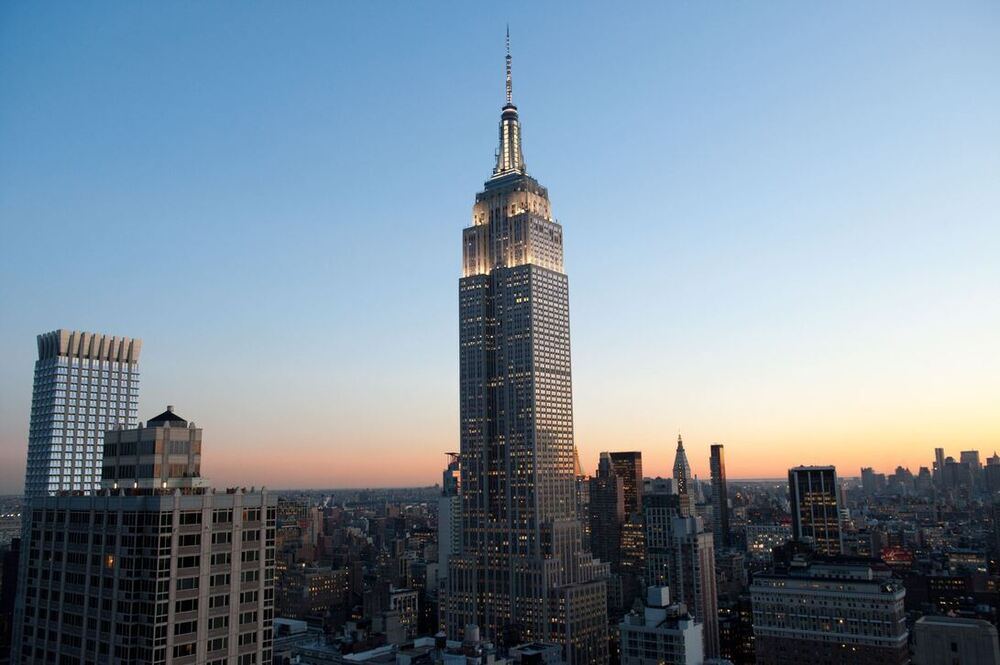
Location: New York, USA
Architect: William F. Lamb, Arthur Loomis Harmon, Yasuo Matsui, Gregory Johnson
From 1931 to 1971, the Empire State Building was the highest skyscraper in the world, and it is still one of the tallest in the United States. Its Art Deco design is distinguished by the use of bold, geometric shapes and decorative accents such as setbacks, terraces, and stylized patterns. It has two observation decks that provide stunning views of the city and also have a lightning protection system that consists of a network of copper cables that run from the top of the building to the ground. These features make it one of the most beautiful art deco buildings in the world.
3.Eastern Columbia Building
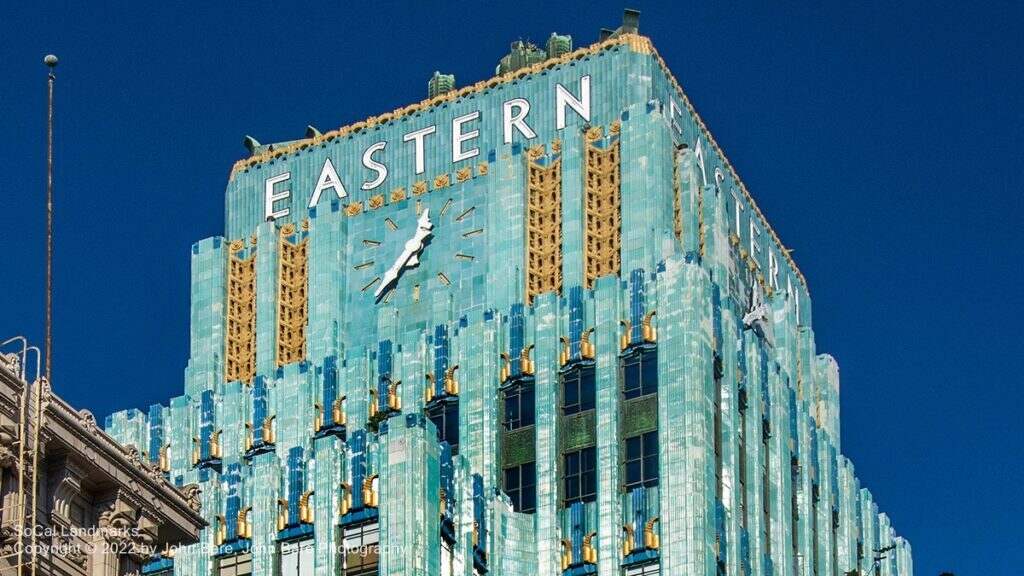
Location: Los Angeles, USA
Architect: Claud Beelman
Also known as the ‘Jewel of Downtown’, the Eastern Columbia Building is an iconic example of Art Deco architecture in Los Angeles. It stands distinguished by its turquoise terracotta facade with gold leaf accents. The tiles are laid out in a geometric pattern and feature stylized patterns typical of the Art Deco era. The building is topped by a prominent clock tower which is adorned with decorative details including a sunburned motif. The Art Deco design elements are also shown on its cornice and its grand lobby which consists of a decorative staircase and elevator doors. It is a tribute to the designers' inventiveness and innovation, and it remains one of the most iconic art deco buildings in the world.
4.Griffith Observatory
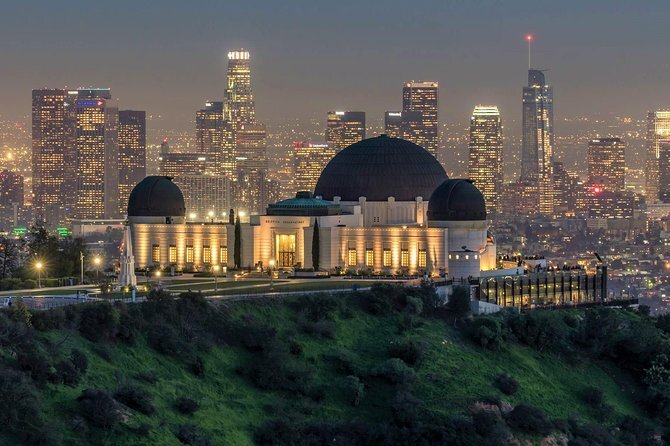
Location: Los Angeles, USA
Architect: John C. Austin and Frederick Ashley
The Griffith Observatory, which is featured in several films including the award-winning ‘La La Land’, is a centre of public astronomy education in the city. The rotunda of the observatory is a circular chamber with a domed ceiling and an exquisite fresco depicting the zodiac signs. During the day, natural light illuminates the ceiling, and at night, a secret light source illuminates it. The Zeiss Telescope, the observatory's principal telescope, is located in a unique tower in the Art Deco style, that is sleek and streamlined, with geometric elements and decorative embellishments. Its exterior is distinguished by its sweeping lines, dramatic geometric shapes, and use of materials such as concrete and travertine.
5. Palais de la Méditerranée
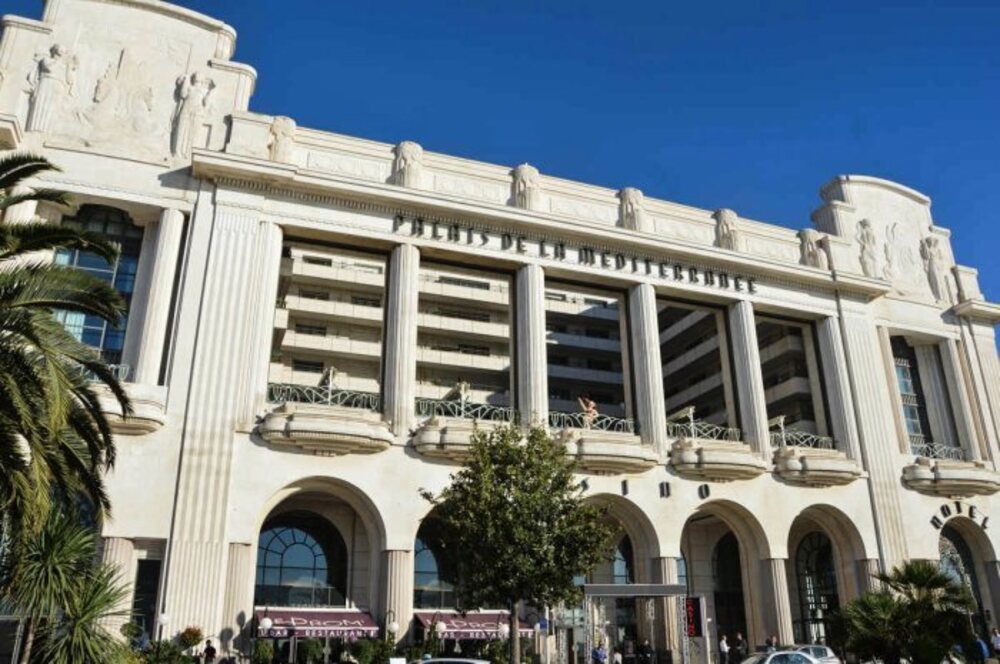
Location: Nice, France
Architect: Charles and Marcel Dalamas
This current Hyatt Regency Hotel is an Art Deco building that is notable for its splendour. The building's white-washed façade has two dignified pediments, wonderful bas-reliefs (a carving technique in which the design stands out from the surface) devoted to the Greek deity Poseidon, and imposing arcades and colonnades. With its soaring ceilings, marble columns, and ornate Art Deco decorations, the lobby is one of the most striking areas in the structure. The ballroom is distinguished by geometric patterns, graceful curves, and dramatic lighting and is frequently utilised for weddings, galas, and other special events.
6. New India Assurance Building
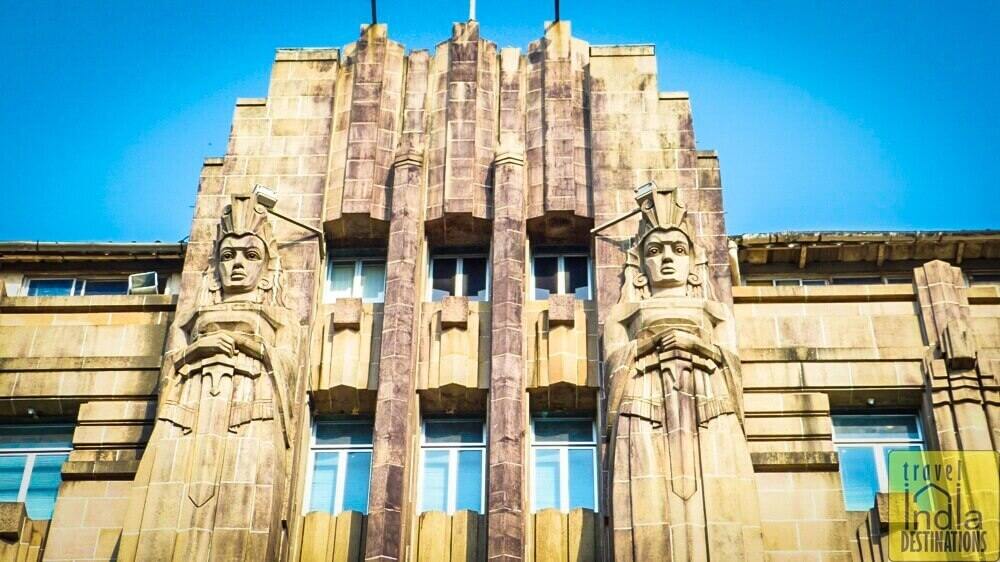
Location: Mumbai, India
Architect: Master, Sathe, and Bhuta
The New India Assurance Building was constructed in 1936 and has intrinsic Art Deco characteristics mixed with traditional Indian artistic elements, creating a style known as the ‘Bombay Deco’ style. This art deco building in Mumbai allows visitors to view sculptural reliefs depicting farmers and artisans at ground level, done in a bold, modern style fueling the agrarian and industrial sectors, which at the time served as the foundation of Indian industry. The city's climate was taken into consideration when designing the building. While the 'transom and mullion'-style windows can be opened to let in a cool sea breeze, the east and west-facing facades have projecting surfaces that offer shelter from the hot sun. This Art Deco building incorporating a mix of Western and Indian styles stands as a memorial to the freedom struggle of the country at that time.
Read more: 10 Best Sustainable Architecture Firms In Mumbai Embracing Vernacular And Modern Technologies (2022)
7. Chicago Board of Trade Building (CBOT)
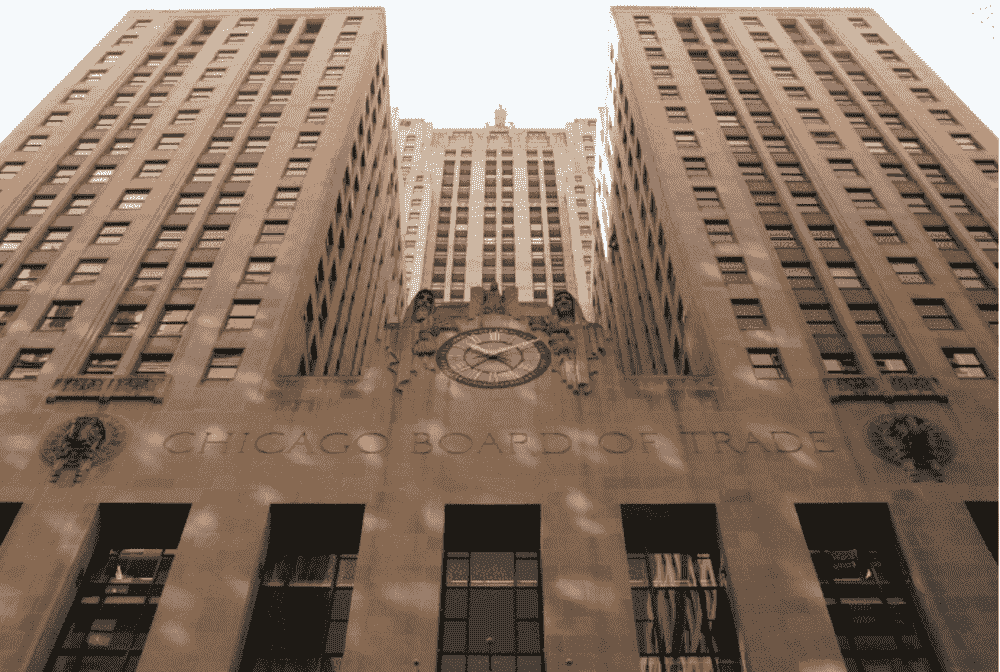
Location: Chicago, USA
Architect: Holabird & Root
This skyscraper was the tallest building (184 metres in height) in Chicago till the year 1965. Its facade is clad with limestone and features intricate carvings and details. The theme of the ornamentations were agriculture and commerce and reflected the primary occupation of the Chicago Board of Trade, for example, the main entrance features bronze figures of a farmer and a Native American, and a tall tower is topped by the statue of Ceres, the Roman goddess of agriculture. The CBOT building is a masterful example of Art-Deco architecture and a testament to the creativity of the designers. It has also been added to the National Register of Historic Places, and it is also now recognized as a Chicago Landmark.
8.Regal Cinema
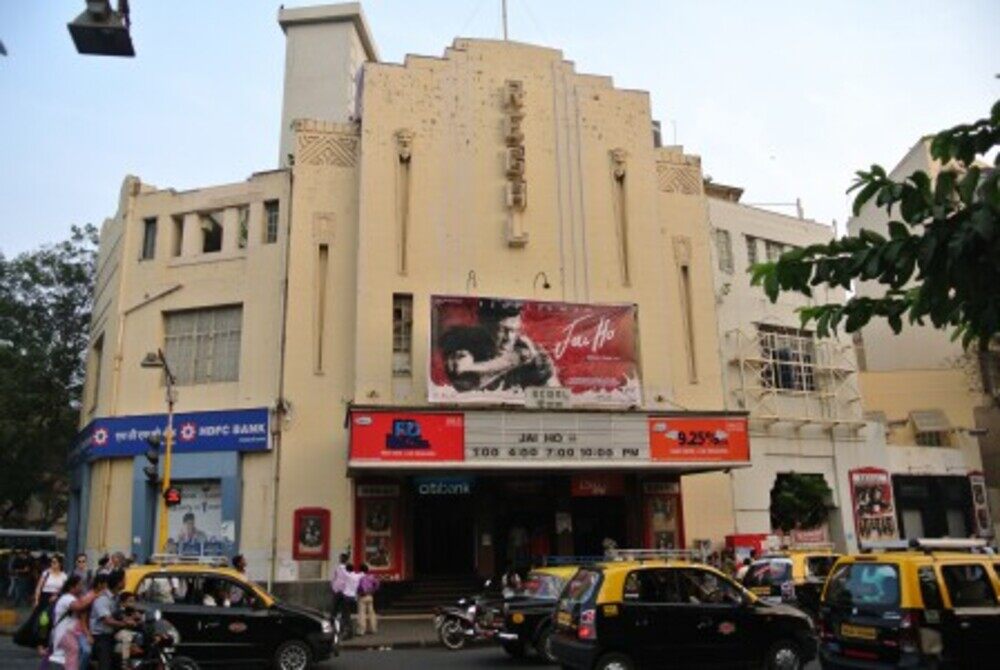
Location: Mumbai, India
Architect: Charles Stevens & G.P. Stevens
Another example of the ‘Bombay Deco’ style, the Regal Cinema, is a fascinating structure in the eyes of the public as it was one of the few theatres to screen Academy Award-winning films in the 30s, including the iconic comic duo of Laurel and Hardy. It makes a considerable use of premium components like marble, brass, and glass. Materials that are typical of Art Deco architecture, such as terracotta, glazed tiles, and stained glass, are used to create the cinema's decorative components. The auditorium area is adorned with elaborate mirror work created by Czech architect Karl Schara and sun rays in shades of jade green and light orange. The mix of local and global architectural styles in this one structure makes it one of the most admired Art Deco buildings in the area.

9. Palacio de Bellas Artes
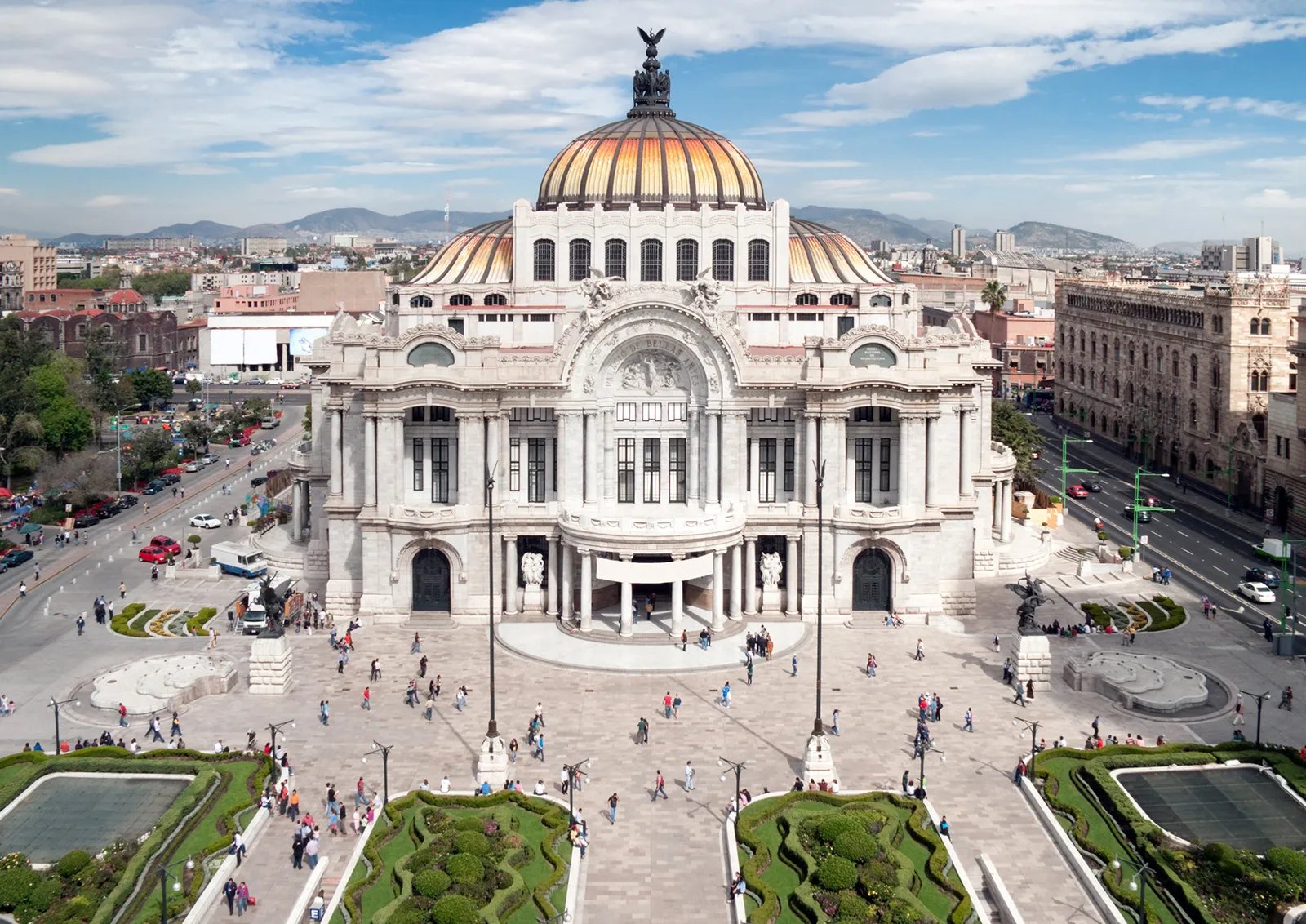
Location: Mexico City, Mexico
Architect: Federico Mariscal and Lorenzo de la Hidalga (first started by Adamo Boari)
The Palacio de Bellas Artes, also known as the Palace of Fine Arts, is a cultural centre and performance hall located in Mexico City. While the exterior of the building showcases Art Nouveau and Neoclassical styles, the interior is primarily Art Deco. A number of other Art Deco architecture features can be found inside the structure, including the use of vivid colours, geometric patterns, and stylized motifs. For instance, the lobby is decorated with Art Deco-inspired murals of Diego Rivera and Siqueiros and stained glass windows. The material used for the exterior of the building is Carrara marble, which is a typical Art-Deco material.
10. American Radiator Building
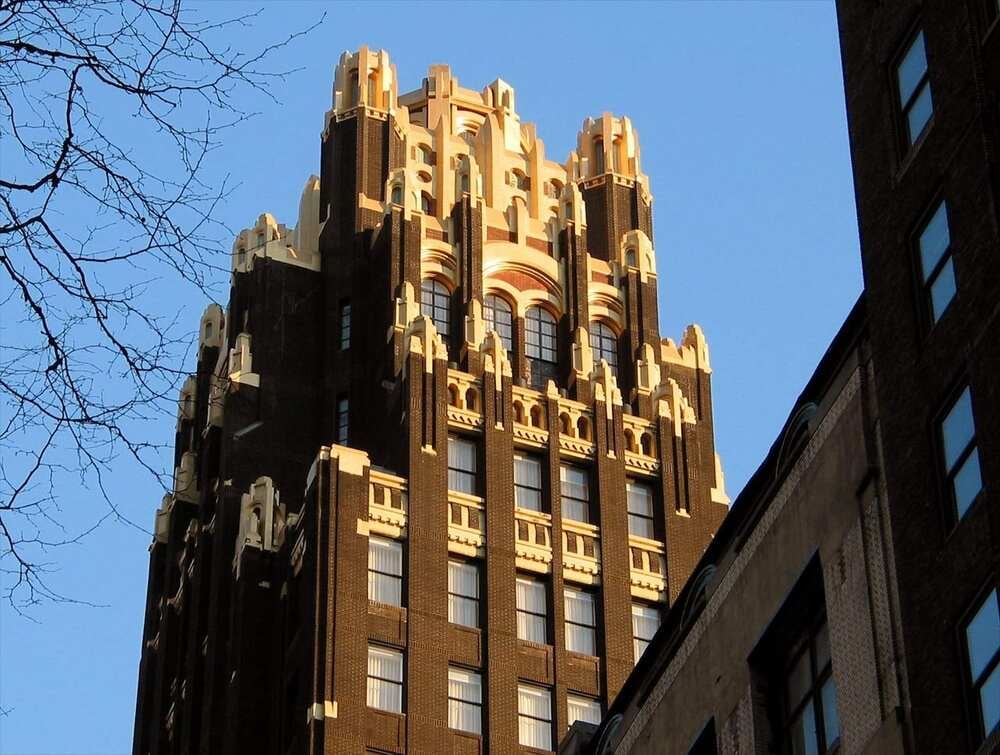
Location: New York, USA
Architect: John Howells, Raymond Hood and Andre Fouilhoux
The American Radiator Building, a former structure for the American Radiator Company, is known for its unique black and gold facade. The tower of the structure is distinguished by a series of zigzag setbacks that give the structure its characteristic appearance. This architectural element, which emphasised geometric shapes and clear lines, was typical of the Art Deco architecture. It is also embellished with a variety of ornamental components, such as sculptures, reliefs, and panels made of carved stone. The structure is constructed mainly of brick and terracotta, and has intricate details on them. The huge radiator sculpture on the building's roof, which was created to represent the building's function as the American Radiator Company's headquarters, is its most well-known decorative feature.
Read more: Traditional Take On The Modern: Parametricism And Culture
11. Palais de Tokyo
Originally built for the 1937 International Exhibition ("Exposition Internationale des Arts et Techniques dans la Vie Moderne"), the Palais de Tokyo in Paris exemplifies the geometric elegance and modernist aesthetic of the Art Deco period. Designed by architects Jean-Claude Dondel, André Aubert, and Paul Viard, the building showcases a fusion of sleek lines, bold shapes, and decorative elements.
One of the notable features of the Palais de Tokyo is its symmetrical facade adorned with geometric motifs and intricate reliefs. The building's sleek geometry and use of materials like concrete and glass reflect the industrial influences prevalent during the Art Deco era. Inside, the Palais de Tokyo features spacious galleries and exhibition spaces characterized by clean lines and minimalistic ornamentation. The interior design emphasizes functionality and showcases a balance between form and function, embodying the principles of Art Deco architecture.
12. Claridge's Hotel
Established in the mid-19th century, Claridge's in London underwent a significant transformation in the 1920s and 1930s, during which it embraced the Art Deco style under the guidance of renowned designers such as Basil Ionides and Oswald Milne. The hotel's exterior features elegant Art Deco architecture details, including streamlined forms, geometric patterns, and decorative elements that exude sophistication and modernity.
The hotel's iconic foyer clock, designed by Eric Gill, is a celebrated Art Deco fixture that captures the era's blend of geometric precision and artistic flair. Claridge's embodies the spirit of Art Deco hospitality, offering guests a unique experience that seamlessly integrates historical charm with contemporary comfort
Conclusion
In conclusion, Art Deco architecture highlights the experimentation of creativity and innovation of the early 20th century. Generations have been captivated by the stunning geometric forms, vivid colours, and opulent ornamentation of Art Deco design, and we are still fascinated by its classic elegance and cutting-edge sensibility. It's obvious that the Art Deco style will always occupy a particular place in the history of architecture and design as we continue to draw inspiration from the past.
Want to learn how to design elegant buildings like these?
Explore BIM Professional Course offered by Novatr. This course helps you understand the subject theory, master advanced tools, and build your expertise. The course helps you:
- Become a BIM expert in just 7 months of part-time, online study.
- Master 15+ Software and Workflows
- Learn from AEC professionals leading BIM at top-tier firms worldwide.
- Work on a live, RIBA-structured capstone project to practise your skills.
- Get placement assistance to land jobs in globally operating BIM firms.
Get your hands on BIM so you can design such beautiful structures with ease.

 Thanks for connecting!
Thanks for connecting!
.png)

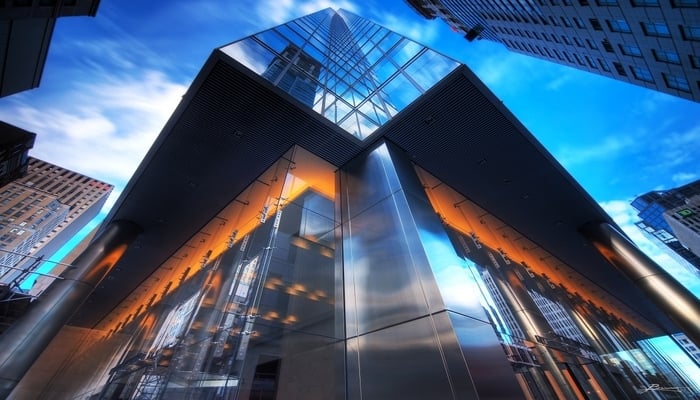

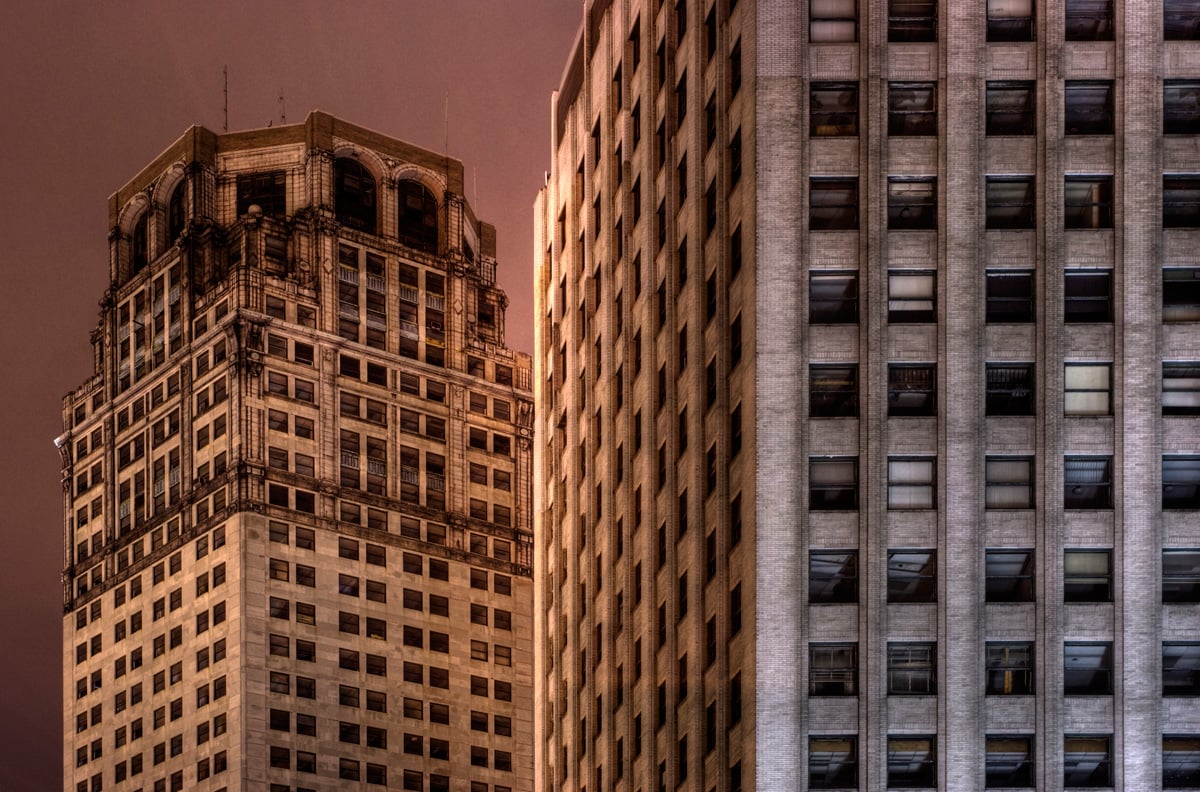
.jpg)
